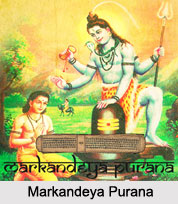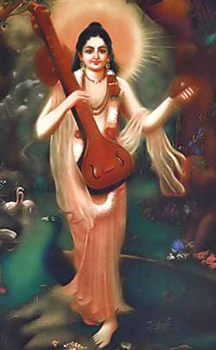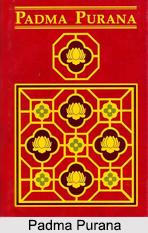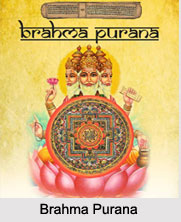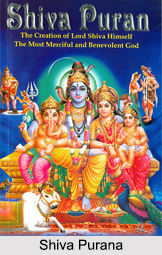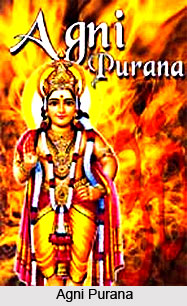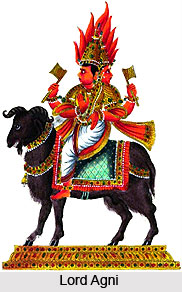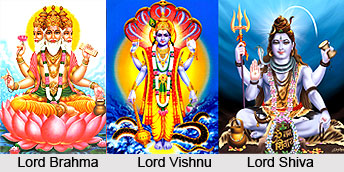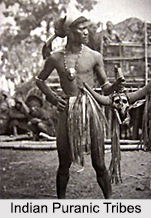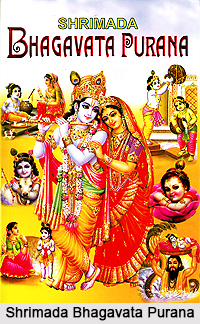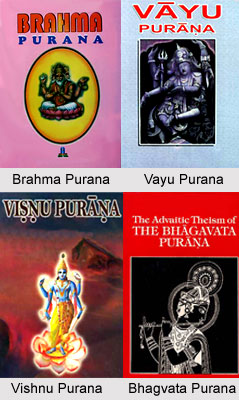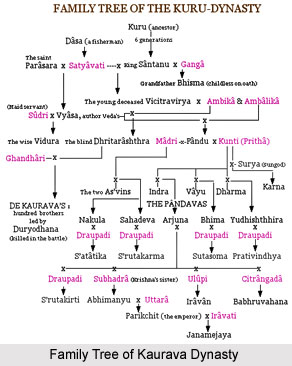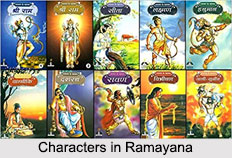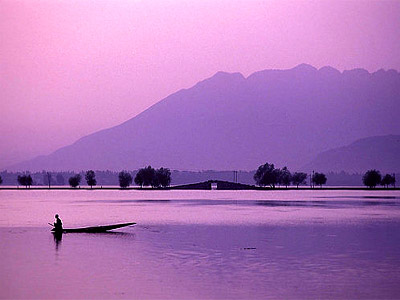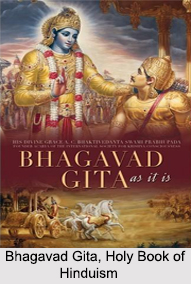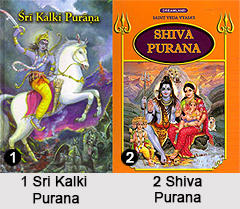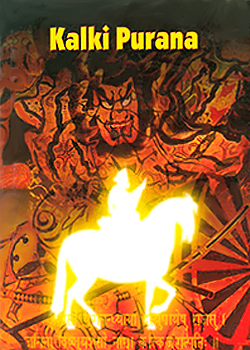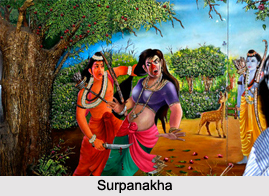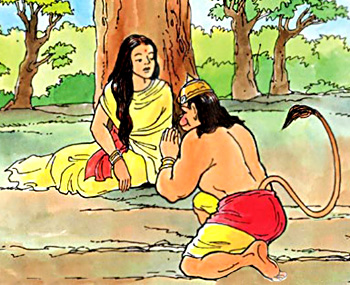 Hanuman meets Sita in the Ashoka Vatika or Ashoka wood in Lanka. This meeting of Hanuman with Sita has been described in the Sundara Kanda of the great epic Ramayana. Hanuman, the bravest and most powerful of all the monkeys, flew over the ocean to reach Lanka. He reached the kingdom of the demon king and searched everywhere in the palace of Ravana. Hanuman got dejected after not finding Sita anywhere, was very disappointed, and thought of searching for her at last in the Ashoka wood. While looking for Sita in the wood he found a weak and thin lady as if with fasting, sighing from heavy grief, dressed in soiled robes, and fortified by horrid rakshasis, as if a deer among the dogs or a shining flame fogged by smoke. After looking at her Hanuman believed that she was Sita, for she was fair and spotless, like a moon overcast by clouds, and she wore the jewels as described by Rama.
Hanuman meets Sita in the Ashoka Vatika or Ashoka wood in Lanka. This meeting of Hanuman with Sita has been described in the Sundara Kanda of the great epic Ramayana. Hanuman, the bravest and most powerful of all the monkeys, flew over the ocean to reach Lanka. He reached the kingdom of the demon king and searched everywhere in the palace of Ravana. Hanuman got dejected after not finding Sita anywhere, was very disappointed, and thought of searching for her at last in the Ashoka wood. While looking for Sita in the wood he found a weak and thin lady as if with fasting, sighing from heavy grief, dressed in soiled robes, and fortified by horrid rakshasis, as if a deer among the dogs or a shining flame fogged by smoke. After looking at her Hanuman believed that she was Sita, for she was fair and spotless, like a moon overcast by clouds, and she wore the jewels as described by Rama.
Hanuman became very happy after discovering Sita in the Ashoka wood and he thought of the two brothers Rama and Lakshmana. While he was still hidden in the Ashoka tree, Ravana came to the place accompanied by his women. He heard the sound of their tinkling anklets while they passed across the golden pavements. Ravana came towards Sita, and when she saw him she trembled like a plantain-tree shaken by the wind, and hid her face and sobbed. Then he wooed her in every possible way, tempting her with comfort, wealth and power, but Sita refused him utterly, and told his death at the hands of Rama in the near future. Ravana became very angry and gave a two-month term, after which, if she did not yield, she should be tortured and slain. Then he left her to the horrid rakshasi guards, ordered them to break her will, and returned with his wives to his apartment.
After Ravana went away, Sita afraid of the threat of torture and death, and reviling Rama, crept to the foot of the Ashoka tree where Hanuman was hidden. Hanuman thought the need to speak with Sita but he feared to frighten her, or to attract the notice of the guard and bring destruction on himself, for, though he possessed the might to slay the rakshasa host, he could not, if wearied out, return across the ocean. So he remained hidden in the branches of the tree and recited the virtues and deeds of Rama, speaking in gentle tones, till Sita heard him.
Sita heard the voice of Hanuman with fear and looked up into the tree, and saw the monkey who was eloquent and humble, and his eyes glowed like golden fire. Hanuman came down out of the tree, ruddy-faced and humbly attired, and with joined palms spoke to Sita. Sita introduced herself to Hanuman and asked for news of Rama, and Hanuman informed her all that had befallen and spoke of Rama and Lakshmana. While Hanuman got a little closer, Sita was much afraid as she thought him to be Ravana in disguise. Hanuman tried his best to convince Sita that he was Rama`s friend and at last when she saw the signet-ring, she got convinced, and she was glad and sorry at once. Glad to know that Rama was alive and well, and sorry for his grief.
Hanuman then suggested Sita to sit on his back so that he could carry her back from Lanka across the sea to Rama. She praised his strength, but would not go with him, because she thought she might fall from his back into the sea, especially if the rakshasas followed them, and because she would not willingly touch any person other than Rama, and she also desired that the glory of her rescue and the destruction of the rakshasas should go to Lord Rama. Hanuman praised her modesty and wisdom, and asked for a token for Rama. Then Sita told him of an adventure with a crow, known only to herself and Rama that had befallen long ago at Chitrakuta, and she gave Hanuman a jewel from her hair, and sent a message to Rama and Lakshmana, praying them to rescue her. Hanuman took the gem and, bowing to Sita, made ready to depart.

